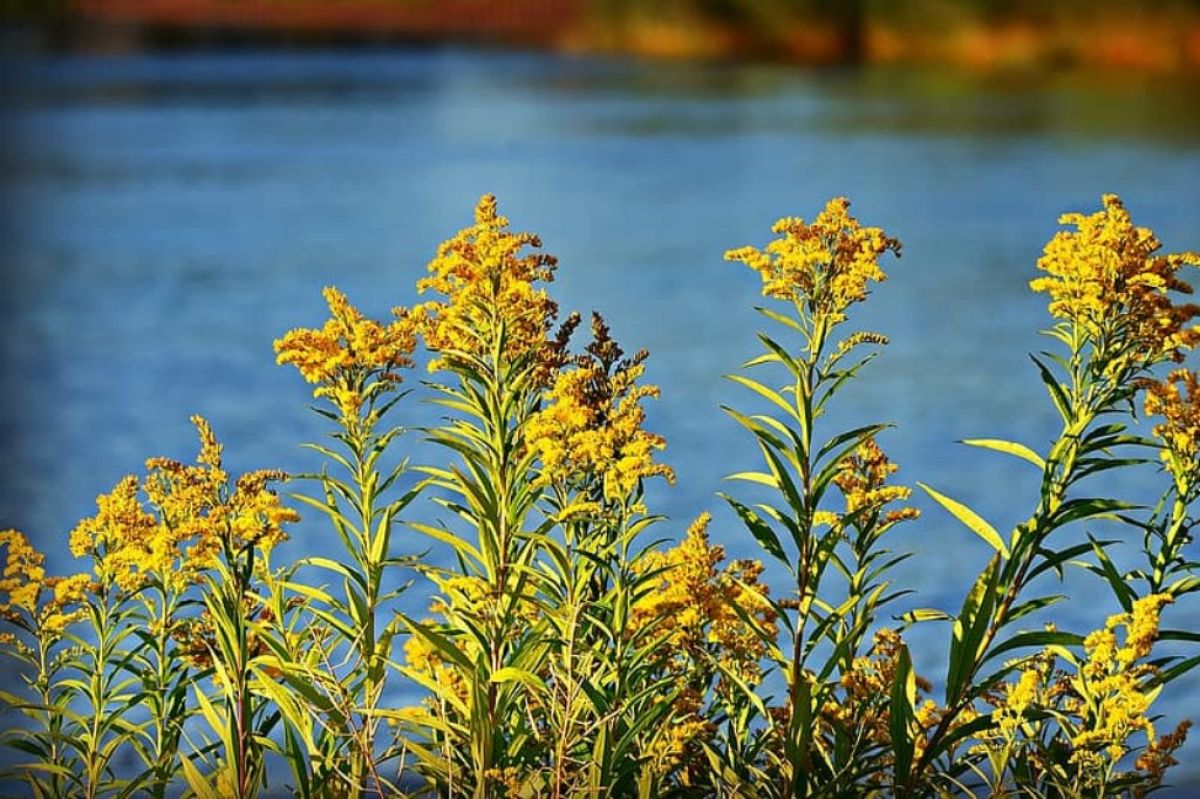Goldenrod is a perennial that is native to Europe and Asia, but it has naturalized throughout Northern America to the extent that it seems as if it has always been here. In late summer and early fall, it produces panicles of golden flower heads in pastures and along roadsides. The botanical name is Solidago from the Latin word meaning “to make whole.” The early American colonists made tea from the flower heads and also used it to make dye.
It is a member of the aster family and blooms at the same time in the fall as some of our native American asters. It is a tall plant and grows best in full sun. It is deer resistant, drought tolerant, and attracts birds. The best time to cut it for bouquets is just before the small flowers in the plumes open, while they still have a greenish cast, and then it will last well in a vase.
Each large flower cluster is composed of hundreds of tiny daisy-type flowers. If you have a naturalistic garden and grow lots of goldenrod, leave plenty of room between it and your other plants, so it does not choke and smother them.
A short variety of Solidago is ‘Little Lemon’, which grows just 12-18” tall and has large fluffy flower heads in Zones 5-8.
Beware of letting goldenrod take over your yard though, as a little goes a long way, as it self-seeds vigorously.
This is Moya Andrews and today we focused on goldenrod.










